Introduction
In the realm of architectural rendering, the integration of client feedback emerges as a pivotal element that shapes the trajectory of design success. As the industry evolves, the ability to effectively gather and implement client insights not only enhances the visual representation of projects but also fortifies the architect-client relationship.
By actively engaging clients through various platforms and employing structured feedback mechanisms, architects can navigate the complexities of design expectations and preferences. This article delves into the significance of client feedback, exploring strategies for its collection, the role of technology in facilitating communication, and the iterative processes that refine architectural designs.
Through a comprehensive examination of these facets, the discussion underscores how a robust feedback loop fosters collaboration, ultimately leading to superior project outcomes and heightened client satisfaction in an increasingly competitive market.
The Importance of Client Feedback in Architectural Rendering
Client feedback serves as a cornerstone in architectural rendering, fundamentally shaping the success of design outcomes at J. Scott Smith Visual Designs. By actively soliciting feedback from customers through platforms like Google, Facebook, and Houzz, architects gain valuable insights into preferences and concerns, enabling them to make informed adjustments prior to project finalization. This iterative process of effective communication fosters a collaborative environment where the vision is meticulously represented.
For instance, one customer observed, ‘The team truly captured my vision for the space, transforming my ideas into stunning visuals that exceeded my expectations.’ The collaborative planning phase, marked by detailed discussions and shared creativity, is crucial in aligning expectations with expert execution, particularly in the context of transformative home renovations. Moreover, initial involvement with responses can highlight possible problems, thus saving both time and resources during the lifecycle.
The incorporation of customer perspectives not only amplifies satisfaction levels but also fortifies trust within the architect-customer relationship. Significantly, with 43.2% of companies having paused or postponed projects due to COVID-19 in 2021, prompt responses from customers have become even more essential in alleviating such challenges. As S Lee, an architecture student, emphasizes, ‘So start gathering those testimonials today and let the power of social proof work for you!’
This highlights the value of testimonials, which serve as a testament to our commitment to quality and excellence. As shown by Uncommon Architects, companies that emphasize input integration gain from tailored strategies and data-informed insights, resulting in improved customer satisfaction and a competitive advantage in the market. Such practices highlight the significance of customer input in architectural design, especially as the industry progresses in 2024 and beyond, where adjusting to customer expectations and preferences is essential.
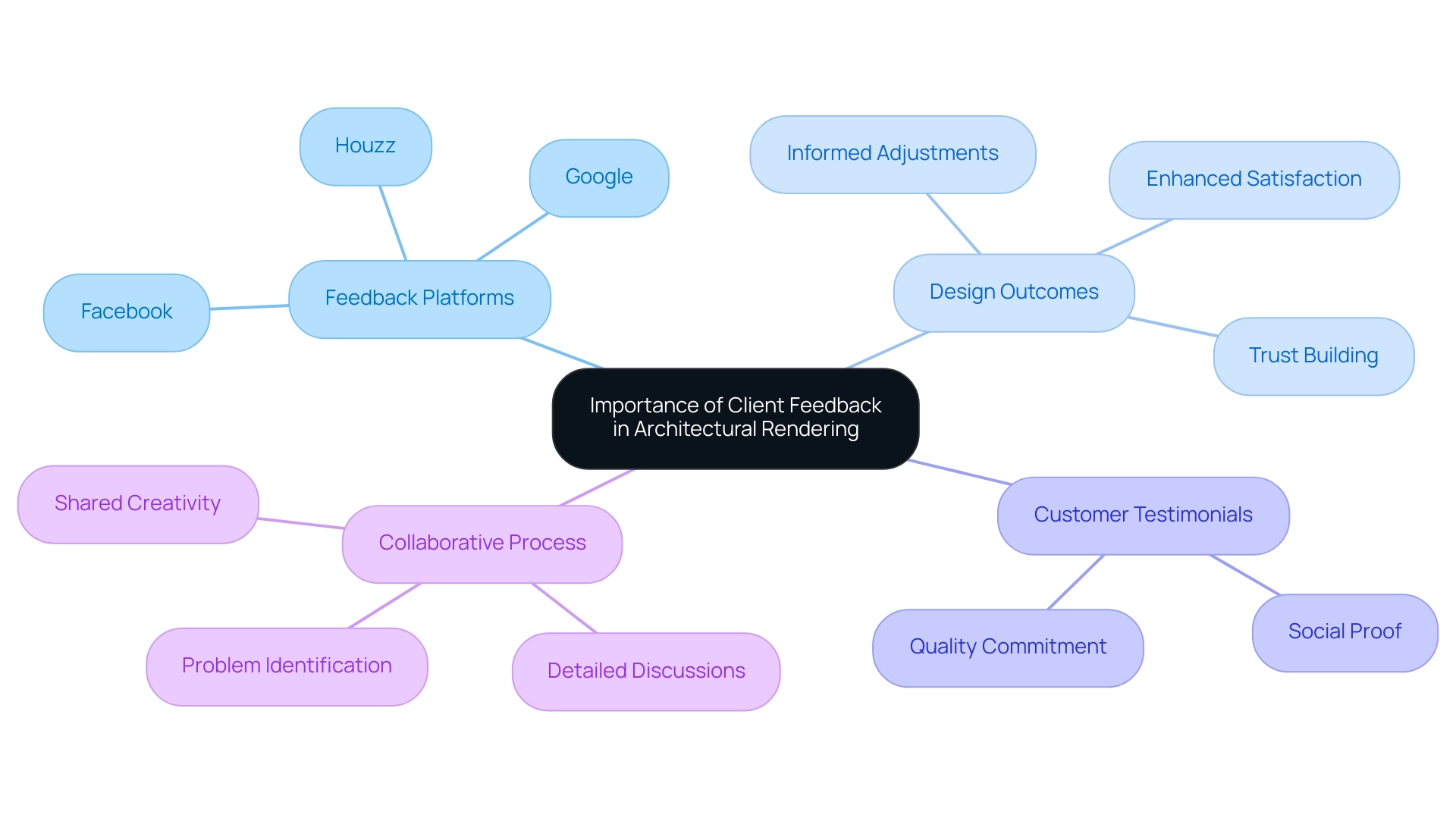
Strategies for Collecting Constructive Client Feedback
To effectively gather architectural rendering client feedback, implement the following strategies:
Structured Feedback Forms:
Create forms intended to assist individuals in navigating particular facets of the rendering, promoting thorough remarks that reflect their insights precisely. For instance, referencing statistics from the article ‘How to minimize rejection in Architecture Jobs?’ can assist in customizing these forms to address common customer concerns.Scheduled Review Meetings:
Arrange regular review sessions to discuss renderings and gather immediate feedback, facilitating real-time clarification and adjustments to the plans.
These meetings can also serve as a platform to address any smart technology security concerns, reassuring stakeholders about their project’s safety.Visual Comparisons:
Present multiple layout options side by side, assisting customers in expressing their preferences more clearly and making informed choices.
This method can be further supported by case studies, such as the ‘Clean Room Design Steps for Freshers,’ showcasing how visual aids enhance comprehension.Feedback Workshops:
Conduct workshops that enable participants to engage directly with the design team, fostering collaborative discussions that can lead to deeper insights.
By integrating emotional engagement—recognizing that well-crafted renderings evoke feelings and assist individuals in visualizing their future homes—architects can enhance the feedback process.
Furthermore, during the final delivery stage, we ensure that all visual details are polished and reflective of the customer’s vision. The finished renderings are delivered in various formats, ready for presentations, meetings, or further project development, solidifying their emotional connection to the project.
By employing these strategies, architects can create a strong communication cycle that encourages collaboration, openness, and customer satisfaction throughout the architectural planning process, which is enhanced by architectural rendering client feedback, as mentioned by expert Manish Pharasi regarding the emotional effect of renderings.
Leveraging Technology for Enhanced Client Communication
Incorporating technology into customer communication is essential for optimizing architectural rendering client feedback in architecture, particularly considering recent challenges posed by the pandemic. Consider the following tools that can facilitate this enhancement:
3D Visualization Software: Applications such as SketchUp and Lumion enable users to engage with designs interactively, transforming them from mere observers into active participants in the creation of their future homes. This immersive approach enhances customer understanding and satisfaction, crucial for fostering community connections. Firms utilizing 3D rendering tools not only satisfy customer expectations but also bolster their market position, particularly as 34.9% of surveyed firms express a desire for architectural rendering client feedback to improve their marketing and business development efforts.
Collaborative Creation Phase: In the creation phase, we produce initial renderings based on the gathered information. Our design stage emphasizes iterative renderings that incorporate architectural rendering client feedback from stakeholders, ensuring that the visual representations precisely embody their vision. The use of management platforms like Trello and Asana streamlines the organization of tasks related to architectural rendering client feedback, systematically recording and addressing client comments to enhance overall management efficiency.
Video Conferencing Tools: Utilizing platforms such as Zoom or Microsoft Teams allows architects to conduct remote discussions and facilitate visual presentations that clarify complex concepts. This is especially relevant in the current environment, where 43.2% of firms have faced delays in their initiatives due to COVID-19. Effective virtual communication has never been more critical, making these tools essential for sustaining momentum.
Feedback Applications: Specific applications like Miro and InVision enable users to annotate designs directly, fostering a more interactive feedback loop. By leveraging these technologies, architects can enhance engagement and ensure that architectural rendering client feedback is addressed in real-time, ultimately leading to more successful outcomes.
As Rishav Sankrityayan notes, “Practice makes perfect, as seen by the mock presentations created to anticipate questions from the municipal council. Beyond financial effects, considering community involvement adds more substance to proposals and showcases a comprehensive understanding of ramifications.” This sentiment encapsulates the importance of utilizing technology not solely for efficiency but also for fostering a deeper understanding of implications among stakeholders. By adopting these advanced communication tools, architects can greatly enhance the response process by integrating architectural rendering client feedback, ensuring that project integrity is upheld even amidst cost-reduction pressures and delays.
This iterative design approach not only enhances the quality of the final product but also embodies ‘The Architectural Visualization Townhomes Advantage,’ creating a strong foundation for community connections.
Overcoming Challenges in Client Feedback Collection
Collecting architectural rendering client feedback frequently involves facing multiple challenges, particularly the occurrence of ambiguous replies and miscommunication. To effectively address these issues, it is essential to implement strategic measures based on architectural rendering client feedback.
Clarify Expectations: Right from the initial stages, ensure that participants have a clear understanding of the response process and what is anticipated from their contributions.
This foundational step is critical in aligning both parties with respect to architectural rendering client feedback.Ask Specific Questions: Shifting from open-ended inquiries to targeted questions can significantly improve the quality of responses.
Such questions should aim to elicit architectural rendering client feedback regarding specific elements of the rendering.Follow Up: Should any responses remain unclear, do not hesitate to reach out to customers for clarification.
This proactive approach can prevent misunderstandings and promote a more productive dialogue by incorporating architectural rendering client feedback.Be Open to Critique: Fostering a culture of openness is vital; individuals should feel encouraged to express their honest opinions without the concern of offending the design team.
This environment not only enhances the quality of architectural rendering client feedback but also strengthens relationships with customers.
At J. Scott Smith Visual Designs, we understand that the collaborative rendering process hinges on effective communication and detailed specifications. Our process includes initial communication through our virtual assistant, followed by a brief, and an initial meeting to understand objectives.
As noted by Ekrem Bahadır Çalışkan, “the study implicated the importance of requirement validation before and during the design process, the difficulty of capturing knowledge from the customer, and assuring the user’s involvement with proper experience level in the briefing.”
By addressing these challenges directly, architects can simplify the communication process and ensure a more effective collaboration, ultimately leading to superior project outcomes, particularly by incorporating architectural rendering client feedback.
Furthermore, our revision policy permits incorporating architectural rendering client feedback, with possible extra fees for changes in scope, ensuring that customer expectations are managed effectively.
Statistics indicate that 18% of contractors think they could enhance their work by being more collaborative, which emphasizes the significance of teamwork in the context of architectural rendering client feedback.
According to recent studies, an impressive 70% of customers are likely to return if their complaints are resolved favorably, which emphasizes the value of architectural rendering client feedback in maintaining customer satisfaction.
Furthermore, it takes 12 positive experiences to offset one unresolved negative experience, emphasizing the necessity of effective complaint resolution.
The Role of Iterative Feedback in Refining Architectural Designs
Iterative feedback acts as a cornerstone in the refinement of architectural concepts, allowing architects to enhance their work through architectural rendering client feedback and continuous engagement with customers. This cyclical process includes several key steps:
Regular Check-Ins: Scheduling frequent meetings is essential to review project progress and gather valuable feedback from customers. This practice not only promotes transparency but also guarantees that stakeholder expectations are consistently aligned with outcomes. The critical nature of these interactions is illustrated by the experiences at J. Scott Smith Visual Designs, as detailed in the case study “Bringing the Interior Renderings Vision to Life,” where collaborative planning with customers during the initial stages has proven invaluable. A statistic emphasizing that there have been 97 contributions on addressing conflicting or changing requirements in EA trade-offs reinforces the significance of these regular interactions in navigating complex challenges.
Prototyping: Creating initial models or sketches for stakeholder review allows for early feedback, essential in influencing the direction of the final outcome. By incorporating user perspectives at this stage, architects can identify potential issues and make adjustments before committing to final renderings. This corresponds with the case study named “Encourage Direct Communication with Customers,” which highlights that interacting with customers through email, live chat, or phone calls produces valuable insights into their needs and preferences, ultimately resulting in improved outcomes.
Adjustments: Applying customer recommendations and showcasing updated iterations of the concepts for additional evaluation encourages a culture of teamwork. This iterative cycle of input and refinement, which incorporates architectural rendering client feedback, guarantees that the final output embodies the customer’s vision and requirements, as evident in our customized proposals developed from careful discussions.
Documentation: Maintaining comprehensive records of all responses and the corresponding design changes is vital. This documentation acts as a reference point for both architects and stakeholders, ensuring that all inputs are thoughtfully considered and facilitating informed decision-making throughout the project lifecycle. Furthermore, as mentioned in the user manual, we promote collaboration, integrating your input at every stage to ensure the final result aligns with your vision.
This approach not only enhances the quality of architectural creations but also fosters a collaborative relationship between architects and their clients. As noted by David C. Wynn from the University of Auckland, > By differentiating the issues and providing a uniform terminology, the article maps insights developed to date and may help situate future analyses of iterative processes. This insight highlights the importance of informed architectural decision-making, particularly in the context of iterative evaluations.
Integrating both quantitative metrics and qualitative feedback highlights the trend towards a more collaborative, iterative design process in contemporary architecture.
Conclusion
Client feedback is essential in architectural rendering, significantly influencing design success. By utilizing structured feedback mechanisms, architects can gather critical insights that inform their decisions and enhance collaboration. Engaging clients through various platforms and employing strategies like structured forms and regular review meetings ensures that their preferences are effectively captured.
The role of technology cannot be overlooked; tools such as 3D visualization software and project management platforms facilitate real-time communication, empowering clients to actively participate in the design process. This is particularly vital in overcoming challenges posed by unforeseen circumstances, like the recent pandemic.
To address common issues such as vague responses, architects must establish clear expectations and foster a culture of openness. By asking targeted questions and encouraging honest feedback, the feedback process can become more efficient, building trust between architects and clients. The iterative nature of feedback allows for continuous design refinement, ultimately leading to enhanced client satisfaction.
In summary, a robust feedback loop is crucial for achieving superior project outcomes and maintaining a competitive edge in the architectural field. By prioritizing client insights and adopting an iterative approach, architects can ensure their designs resonate with client aspirations, cultivating lasting satisfaction and strong relationships. As the industry continues to evolve, the commitment to integrating client feedback will remain a fundamental aspect of architectural excellence.

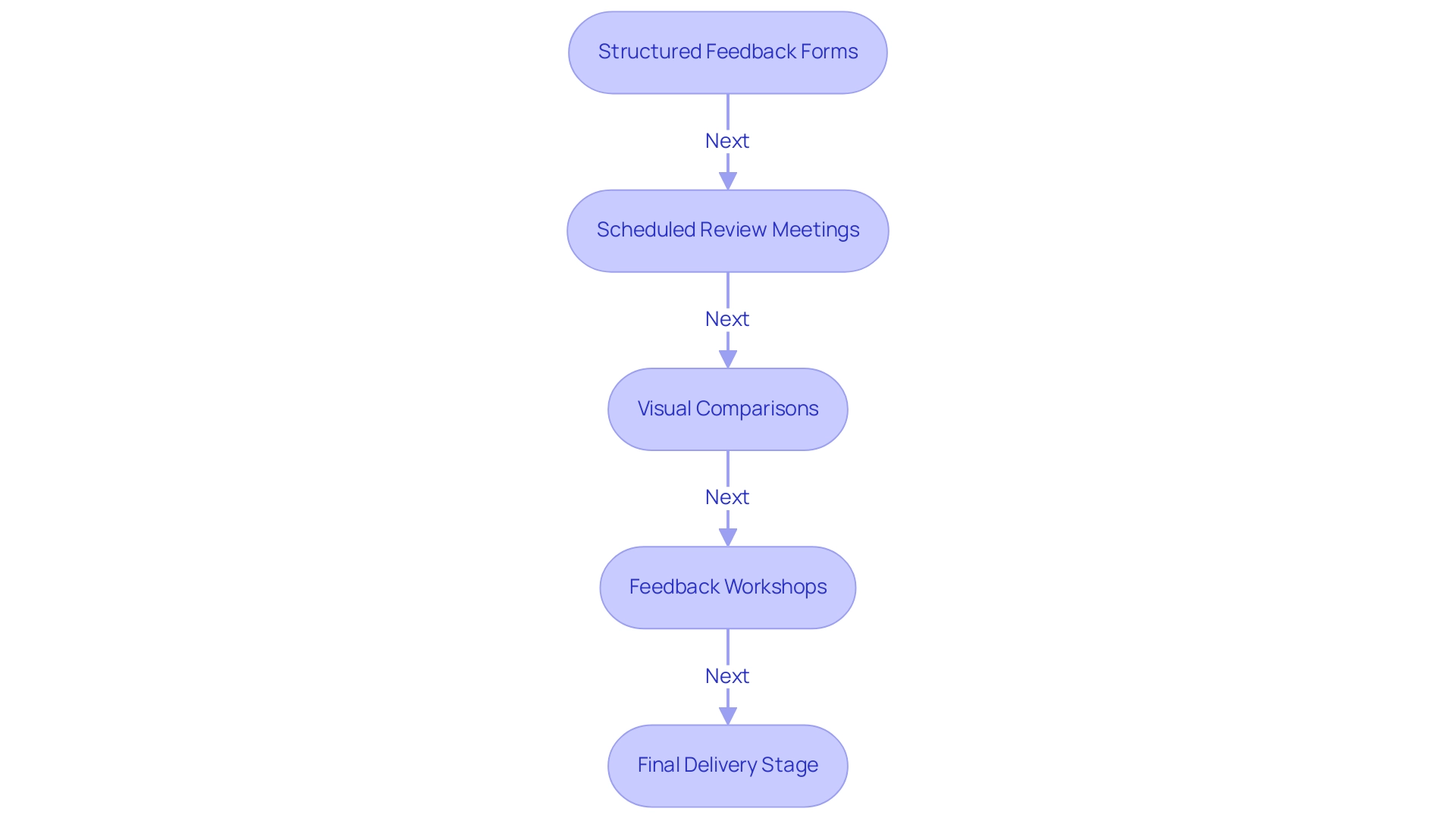
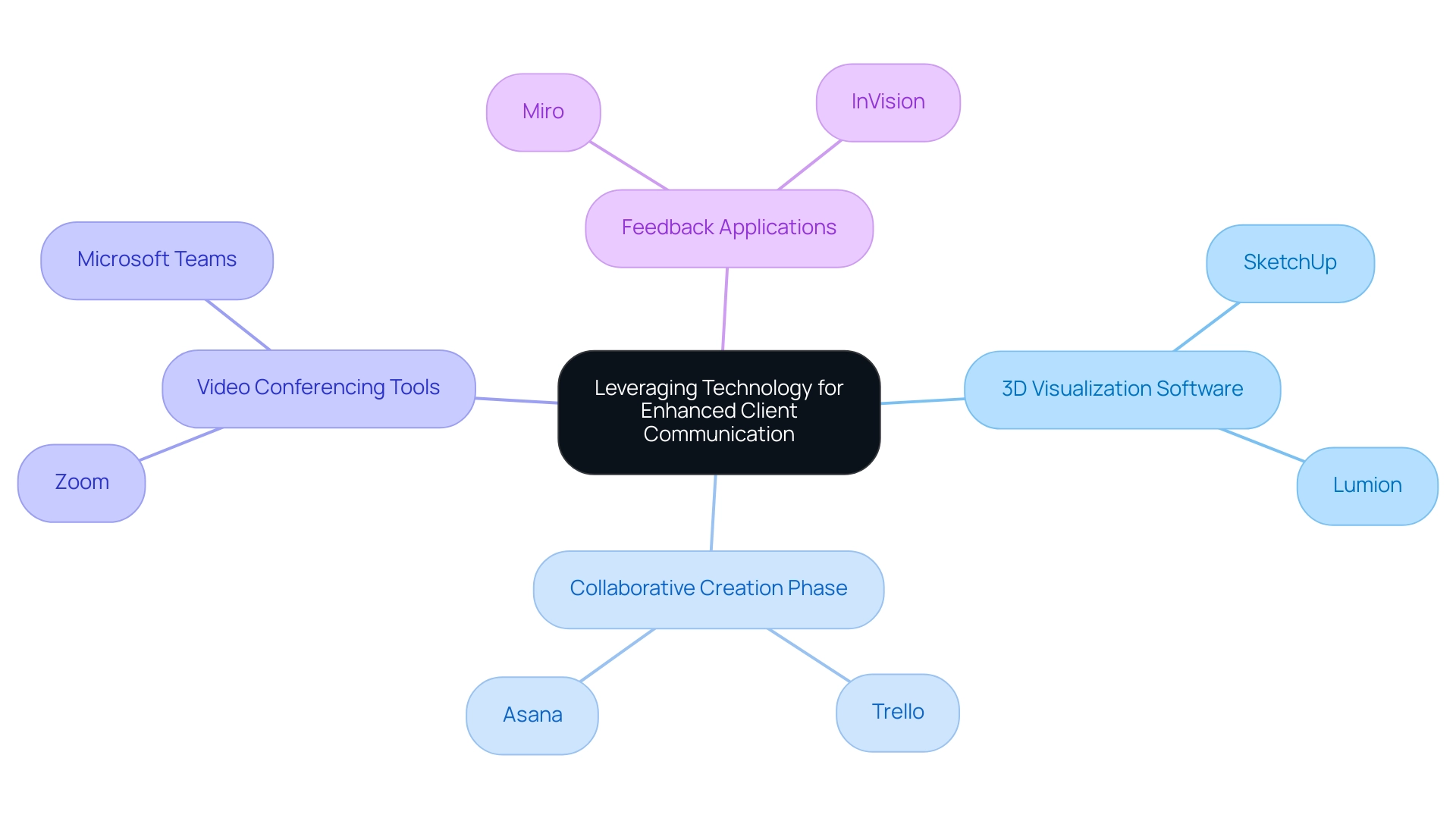
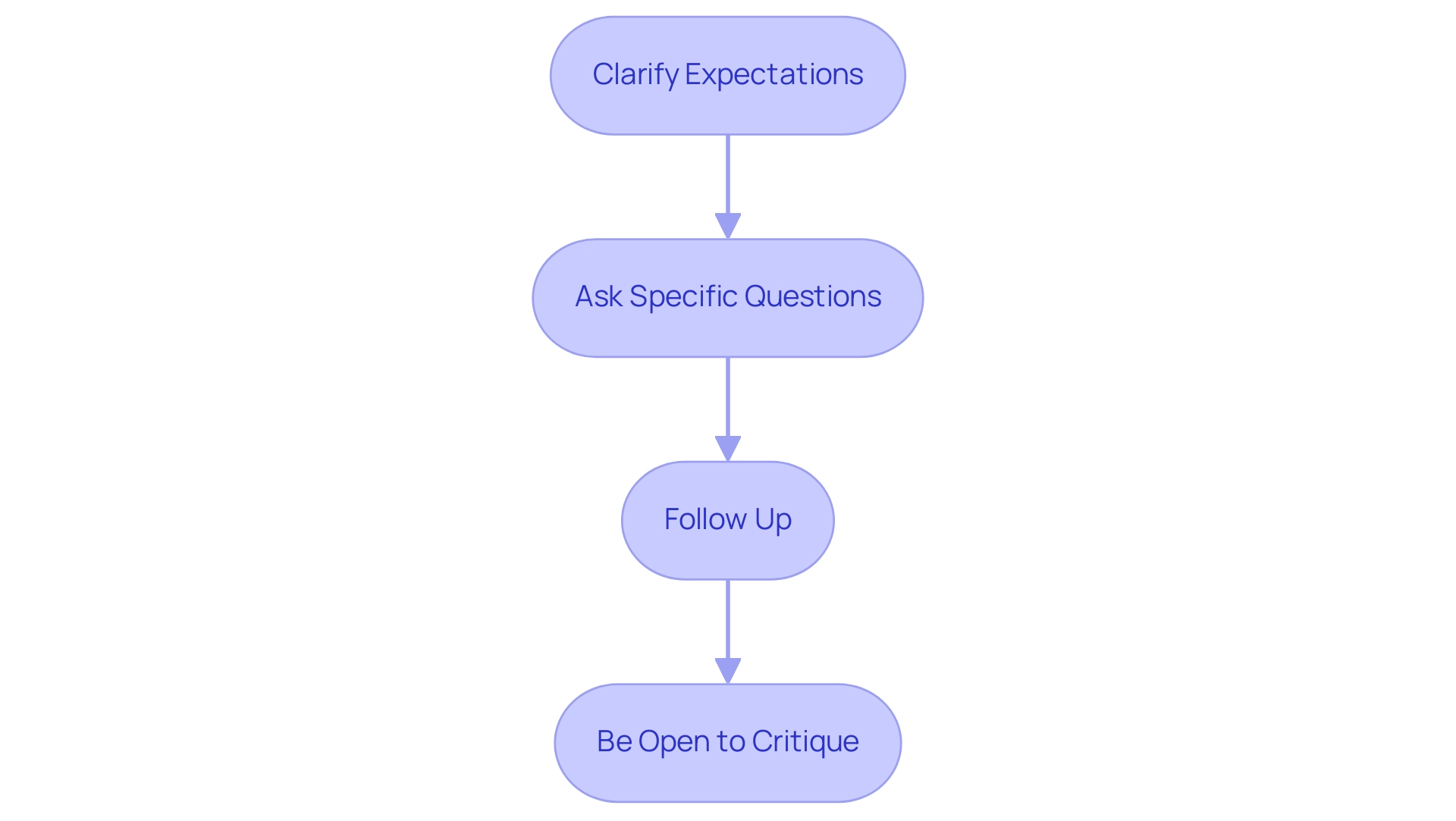
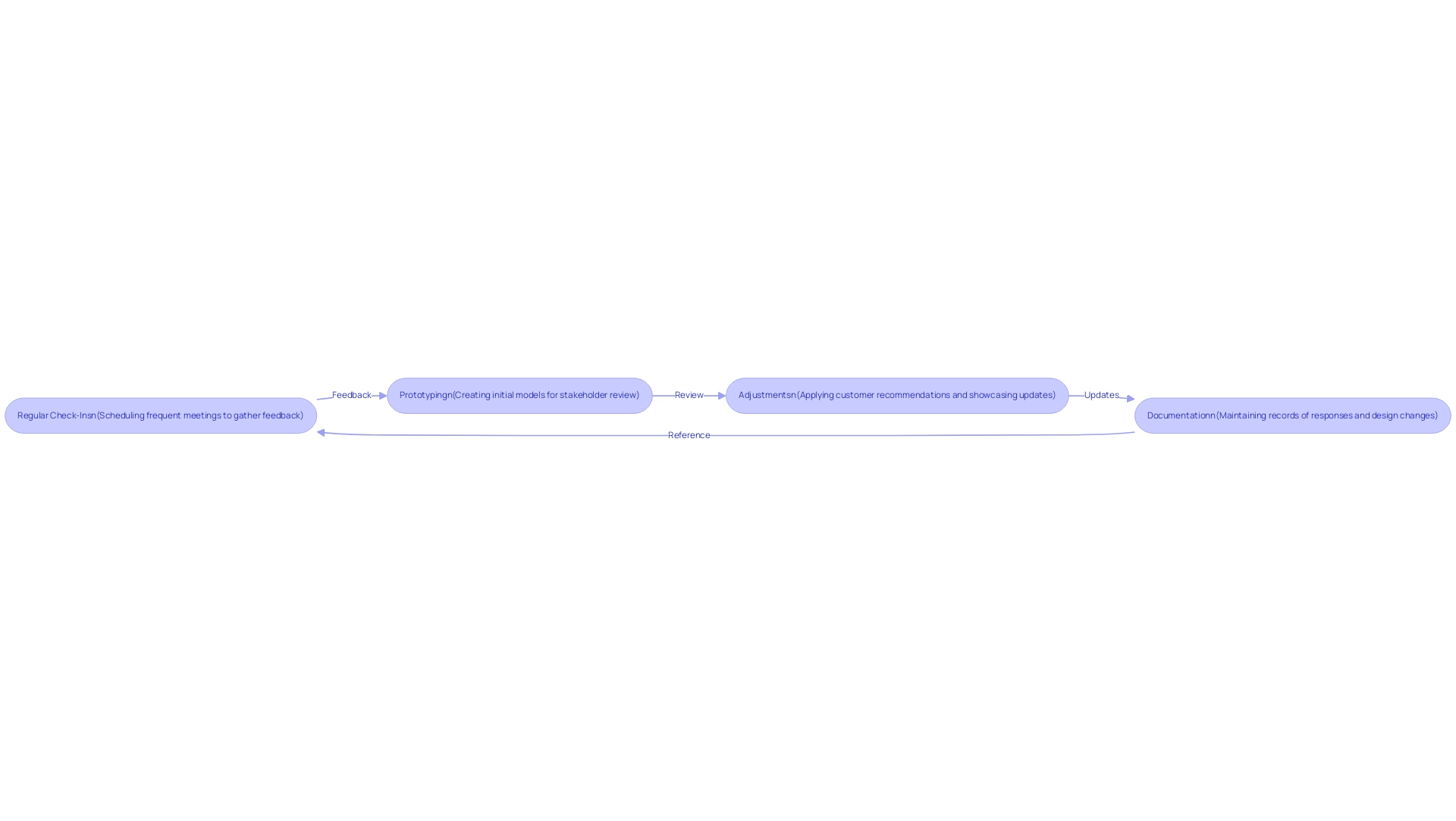
0 Comments